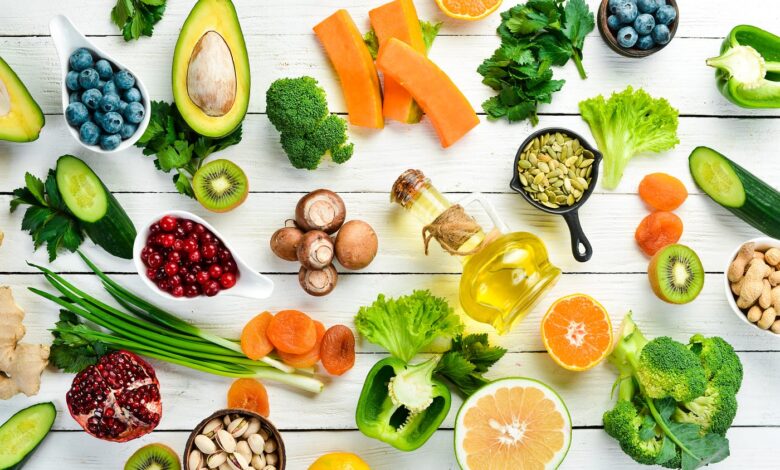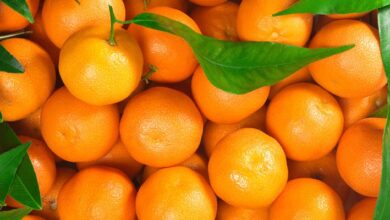35 Best Low-Calorie Foods For Weight Loss
35 low-calorie, filling foods into your diet can contribute to weight loss without sacrificing nutritional value.

In the journey to shed unwanted pounds, the importance of a balanced diet cannot be overstated. While it’s crucial to create a caloric deficit, it’s equally essential to choose foods that keep you satiated without packing on the calories. This article explores the 35 best low-calorie, filling foods that can aid in your weight loss journey. These foods not only contribute to weight management but also provide essential nutrients to support overall well-being.
1. Leafy Greens:
Leafy greens such as spinach, kale, and Swiss chard are rich in fiber, vitamins, and minerals. Their low-calorie content makes them an excellent choice for those aiming to lose weight while ensuring proper nutrient intake.
2. Broccoli:
Broccoli is a nutrient-dense vegetable that is low in calories but high in fiber. It’s a versatile ingredient that can be added to salads, stir-fries, or enjoyed as a side dish.
3. Cauliflower:
Cauliflower is a low-calorie alternative to starchy vegetables. It can be used to create rice, mashed potatoes, or even pizza crust, providing a satisfying and guilt-free option.
4. Celery:
With its high water content and crunch, celery is a snack that not only satisfies your need to munch but also keeps calorie intake in check.
5. Bell Peppers:
Colorful bell peppers are not only visually appealing but also low in calories. They can be enjoyed raw with dips or cooked in various dishes.
6. Cucumbers:
Cucumbers are hydrating and low-calorie, making them an excellent choice for snacks or as a base for salads.
7. Carrots:
Carrots are a sweet and crunchy option that can be enjoyed as a snack or added to salads for extra texture and flavor.
8. Zucchini:
Zucchini is a versatile vegetable that can be spiralized into noodles, added to soups, or grilled for a low-calorie side dish.
9. Berries:
Berries such as strawberries, blueberries, and raspberries are not only low in calories but also rich in antioxidants, fiber, and vitamins.
10. Apples:
Apples are a convenient and portable snack that satisfies sweet cravings while providing fiber to keep you feeling full.
11. Grapefruit:
Research suggests that grapefruit may have properties that aid weight loss. Enjoying this citrus fruit can be a refreshing addition to your diet.
12. Watermelon:
With its high water content, watermelon is a hydrating and low-calorie fruit that makes a delicious snack or dessert.
13. Lean Protein:
Incorporating lean protein sources such as chicken breast, turkey, tofu, and fish can help maintain muscle mass while keeping you satiated.
14. Eggs:
Eggs are a protein-rich food that can be prepared in various ways, providing a versatile and filling option for breakfast, lunch, or dinner.
15. Greek Yogurt:
Greek yogurt is not only rich in protein but also contains probiotics that support gut health. Choose plain, non-fat varieties to keep the calorie count low.
16. Cottage Cheese:
Cottage cheese is a protein-packed dairy option that can be enjoyed on its own or added to salads and snacks.
17. Legumes:
Beans, lentils, and chickpeas are excellent sources of protein and fiber, making them filling additions to soups, salads, or main dishes.
18. Quinoa:
Quinoa is a whole grain that is high in protein and fiber, making it a nutritious and satisfying alternative to traditional grains.
19. Oats:
Oats are a high-fiber grain that can be enjoyed as a breakfast option or used in recipes for added texture and nutrition.
For More Update Follow : https://aroundusinfo.com/10-healthy-drinks-that-wake-you-up-better-than-coffee/
20. Sweet Potatoes:
Sweet potatoes are a nutrient-dense, low-calorie vegetable that provides complex carbohydrates and fiber, making them a filling choice.
21. Mushrooms:
Mushrooms are low in calories and can be a flavorful addition to various dishes, providing a meaty texture without the added calories.
22. Asparagus:
Asparagus is a low-calorie vegetable that is rich in fiber and can be grilled, roasted, or added to salads for a tasty side dish.
23. Brussels Sprouts:
Brussels sprouts are not only low in calories but also high in fiber and vitamins. Roast or sauté them for a delicious and filling side.
24. Tomatoes:
Tomatoes are versatile and low in calories. They can be added to salads, sandwiches, or enjoyed as a snack.
25. Cabbage:
Cabbage is a cruciferous vegetable that is low in calories and can be used in salads, slaws, or stir-fries for added crunch.
26. Green Beans:
Green beans are a low-calorie vegetable that can be steamed, sautéed, or roasted for a nutritious and satisfying side dish.
27. Straw Mushroom:
Straw mushrooms are low in calories and can be added to soups, stir-fries, or Asian-inspired dishes for a unique flavor and texture.
28. Watercress:
Watercress is a leafy green that is nutrient-dense and low in calories. Add it to salads or sandwiches for a peppery kick.
29. Eggplant:
Eggplant is a low-calorie vegetable that can be grilled, roasted, or used in casseroles for a hearty and filling option.
30. Arugula:
Arugula is a leafy green with a peppery flavor that can be added to salads or used as a bed for grilled proteins.
31. Mustard Greens:
Mustard greens are low in calories and rich in nutrients. Include them in salads, or soups, or sauté them for a flavorful side dish.
32. Seaweed:
Seaweed is a low-calorie option that can be used in salads, wraps, or enjoyed as a snack, providing a unique flavor and texture.
33. Cabbage Kimchi:
Cabbage kimchi is a fermented food that is low in calories and rich in probiotics, supporting gut health and aiding digestion.
34. Pickles:
Pickles are a low-calorie snack that can satisfy cravings for something crunchy and tangy without derailing your weight loss efforts.
35. Air-Popped Popcorn:
Air-popped popcorn is a whole-grain snack that is low in calories when prepared without excessive butter or oil. It can be a satisfying alternative to traditional high-calorie snacks.
Incorporating these 35 low-calorie, filling foods into your diet can contribute to weight loss without sacrificing nutritional value. Remember, achieving and maintaining a healthy weight involves a combination of a balanced diet, regular physical activity, and lifestyle choices. Experiment with these foods, mix and match them in various recipes, and find what works best for your taste preferences and weight loss goals. Always consult with a healthcare professional or nutritionist before making significant changes to your diet, especially if you have any underlying health conditions.



